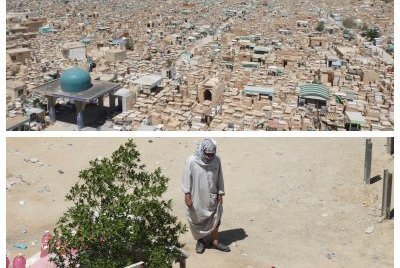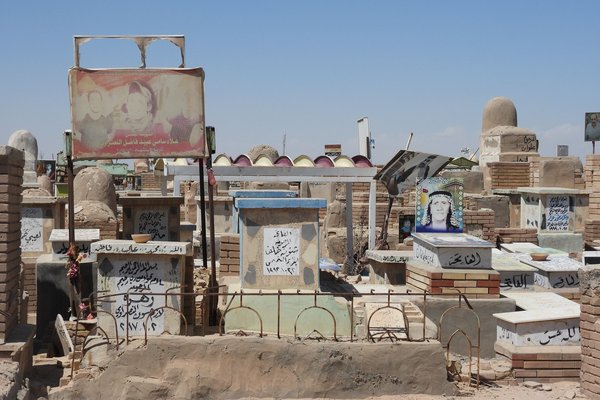Iraq
Wadi Al-Salam Cemetery in Najaf
Wadi Al-Salam Cemetery in Najaf is one of the oldest and largest Islamic cemeteries in the world. The cemetery was developed over 1,400 years ago near the shrine of Imam Ali Ibn Abi Talib, the fourth Sunni Caliph and the first Shia Imam. Thus, many Shi'ites in Iraq request that they be buried in this cemetery. It contains millions of burial places in communal crypts.
Site Info
Official Information
- Full Name
- Wadi Al-Salam Cemetery in Najaf (ID: 5578)
- Country
- Iraq
- Status
-
On tentative list 2011
Site history
History of Wadi Al-Salam Cemetery in Najaf
- 2011: Added to Tentative List
- Added to tentative list
- Type
- Cultural
- Criteria
Links
All Links
No links available.
Community Information
- Community Category
- Religious structure: Islamic
- Secular structure: Burial
Travel Information
Recent Connections
News
No news.
Community Reviews
Show full reviews
Najaf in Southern Iraq is the holiest city for Shia Islam as it holds the Tomb of Ali – “the” Ali, son-in-law of the Prophet Mohammed and with whom the Shia split from the lineage as recognized by the Sunni. He was assassinated in 661 in nearby Kufa and buried in Najaf (though some believe his remains are elsewhere, the Caliphs since the 8th century have recognized Najaf as the place and it developed into a huge pilgrimage site).
The Tomb of Ali is now housed in a glitzy mausoleum, rebuilt and embellished over and over again. The day before, I had been to the Tomb of his son Hussain in Karbala, but clearly this one in Najaf is the one where the most focus lies and where the money flows to. The exterior is covered with glazed tiles and the inner grounds have those huge umbrellas that you also see in Medina to provide the pilgrims with shade to sit and pray. Non-muslims are allowed to enter all the way; for the females, this means that they have to borrow an abaya at the entrance. The women’s queue to the tomb was quite pushy; people couldn’t wait to touch the grille around it or tie a ribbon to it.
About 500m away lies the Wadi Al-Salam Cemetery, which is said to hold the graves of 6 million Shi’ites wanting to be buried close to Ali. Spread across 6 square km, it is very densely packed. Roads are …
Keep reading 0 comments
